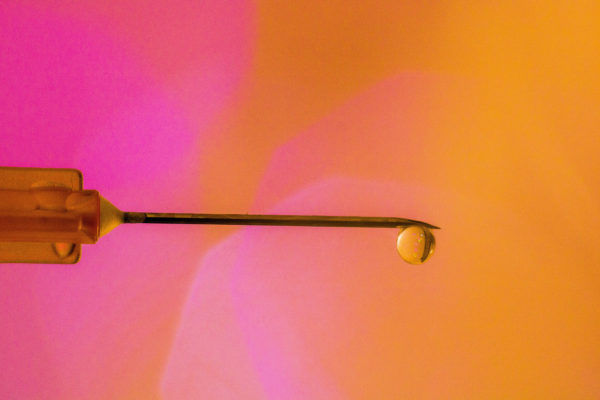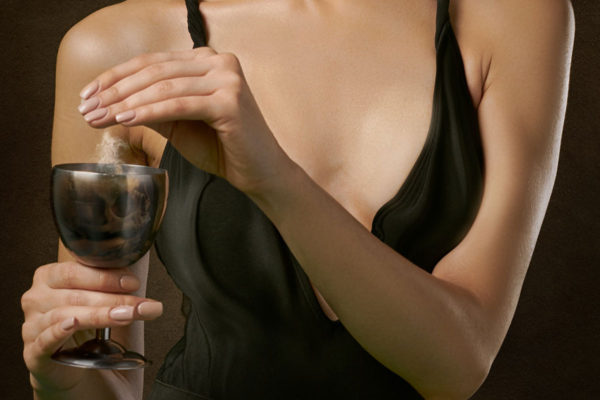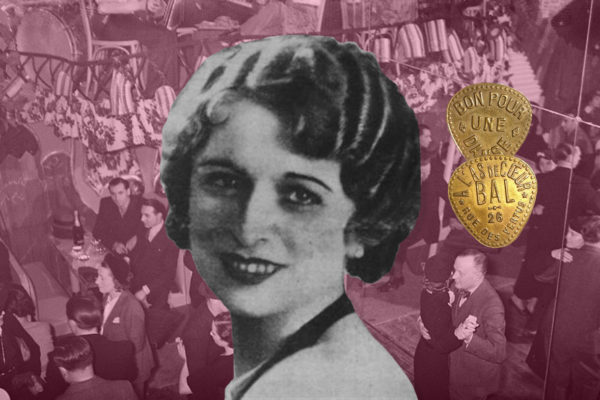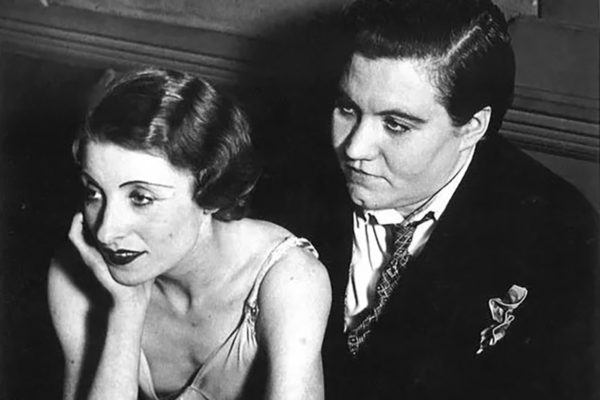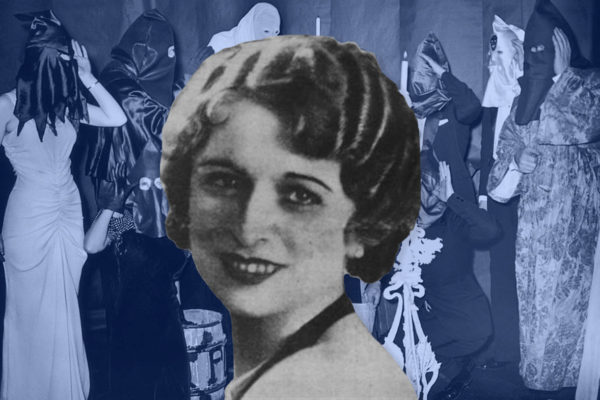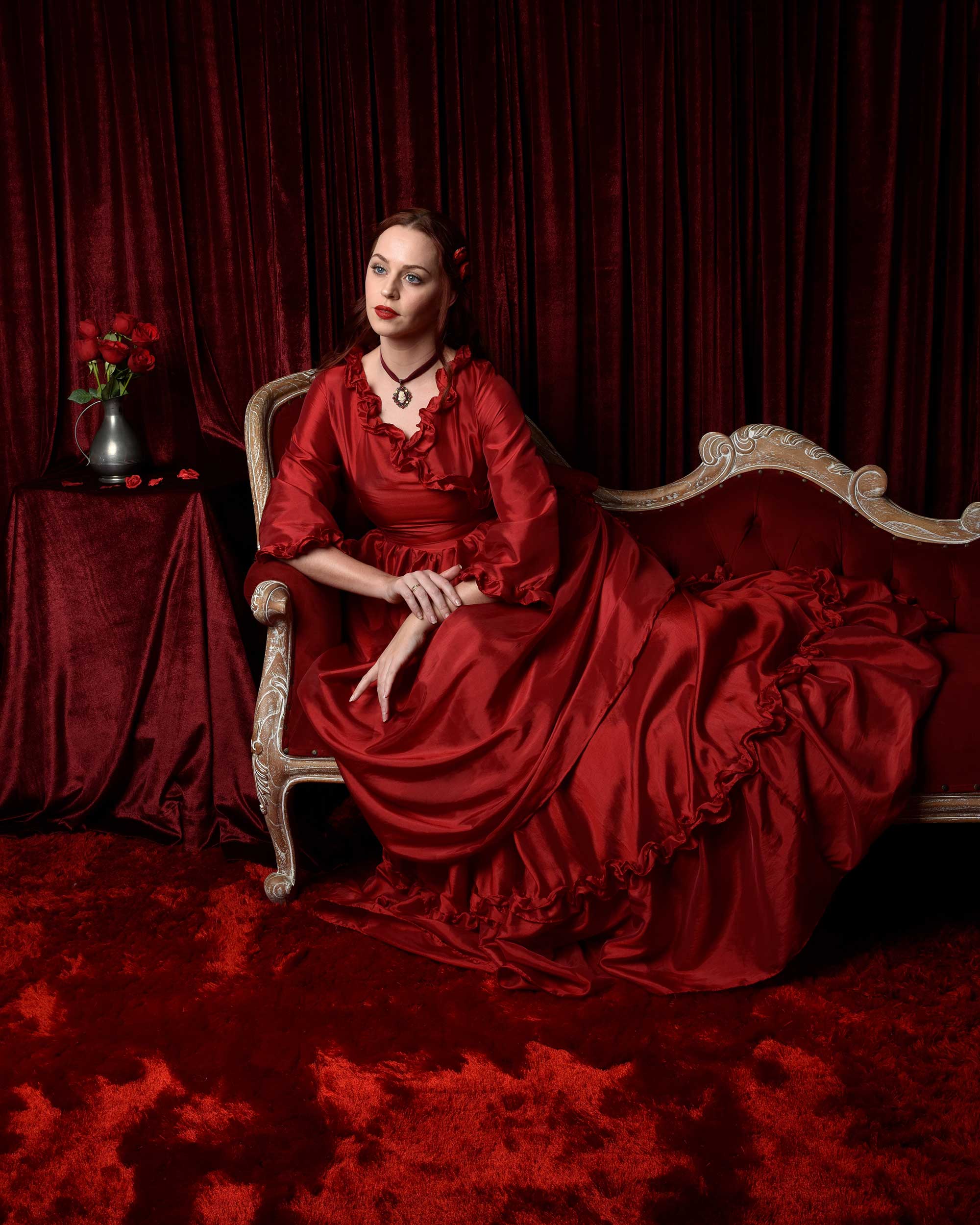
Femme fatale: the Lafarge poisoning scandal
In the summer of 1840 Marie Lafarge was the most famous woman in France. She was such a celebrity that everything she did, said and wore was reported in the press. Letters to her husband revealing the most intimate details of their marital relations were printed for anyone to read. At the peak of her fame she received 6,000 letters a week. Many of these were from young women and were accompanied by gifts of books and flowers; others were from male admirers offering her money or asking to marry her. The attention was understandable. While not beautiful, Marie was a refined young woman with captivating dark eyes and an attractive figure even in her sober widow’s dress. She cut a brave figure – romantic even – in the quiet forbearance of her struggles. Cast off by her family, abandoned to her fate in an isolated ruin with a man she barely knew. Was it any wonder that so many men wanted to rescue her? The fact that she was on trial for the murder of her husband – if anything, that only seemed to add to her appeal. While half the country pitied Marie, the other half was baying for her blood. The scandal of this unlikely arsenic poisoner divided the country at the time and is still debated today. Just what did happen between Marie and her husband?

Faking it
Their relationship was based on a lie right from the start. Several lies, in fact. Marie thought that she met Charles Pouch-Lafarge, her future husband, at the opera by chance but really it was a set up, arranged between him and her uncle. Marie’s uncle/guardian had secretly used a marriage broker to find a match for his niece who, at 23 had hitherto been too unrealistic about the kind of husband she could expect for herself, rejecting perfectly fine candidates because of her fanciful notions about being a member of the aristocracy. To make matters worse, Marie and her aunt, his wife, didn’t get along. They had adopted Marie five years ago after the death of her mother (her father died when she was 12) and enough was enough. It was high time for Marie to marry and move out. Which is why the uncle took it upon himself to find a suitable husband – someone with a decent income and standing – to take this burden off his hands. And so, not to humiliate Marie, he pretended to bump into this eligible landowner, presented as an old friend, at the opera while out with his niece. Sparks would fly naturally.
That was the first lie. Not such a bad one, really. Not compared to the second, the one that Charles Lafarge told. There was no romance in what Charles wanted from the relationship, simply money. He hired a marriage broker because getting a rich wife was an easy way to pay off his debts, the debts he’d run up trying to get his iron foundry business off the ground. While Marie wasn’t rich in her own estimate, her dowry of 90,000 francs (about 250,000 USD today) would do. To make himself seem like a more attractive prospect, he exaggerated grotesquely about his property and income in the Corrèze region in the south-west of France. Marie would see for herself just how much of an exaggeration it was soon enough but for now, this 28 year old with 30,000 francs a year and an estate worth 200,000 was good enough for exigeant Marie. Her aunt and uncle must have been so relieved.
Marie, on the other hand, wasn’t thrilled about the prospect of marrying Charles. She considered him to be ugly, low bred and uncouth. For example, he didn’t use napkins, preferring instead to wipe his hands on his trousers as he ate. At the same time, in marrying him, she would have her freedom and be mistress of a magnificent estate. Marie’s great-grandfather was Louis Philippe II, the Duke of Orléans and father of the current king. OK, her grandmother was the product of an adulterous relationship but Marie was extremely proud of this royal lineage nevertheless. At her fancy Paris schools, Marie had been a contemporary of legitimate aristocrats and rich girls without having their means or connections. But with an advantageous marriage s he would be able to – finally – hold her head up – an equal, not the poor relation she had felt herself to be her whole life. Maybe her husband wasn’t her courtly ideal but he was young and she could teach him, couldn’t she? It was worth a shot.

The wedding
Marie and Charles married in Paris on 10 August, 1839. They departed early the next day for Le Glandier, Charles’ estate in Corrèze. For breakfast in the coach, Charles ripped apart and ate a roasted chicken with his hands then washed it down with a whole bottle of Bordeaux. Marie was repulsed by her husband and went to sit outside. The journey south took several days, with overnight stops in inns or, later, paying visits to Charles’ relatives. Marie was exhausted and weakened by the trip; via her maid Clémentine, she pleaded with her husband to postpone the physical aspect of their union until they reached Le Glandier. With some reluctance, he agreed.
In her autobiography, Marie explains that she was ignorant in matters of sex. Her aunts attempted to explain what would be expected of her from her new husband but – embarrassed – she ended the conversation, claiming falsely that she was already aware of the facts of life.
Things only got worse when they arrived at their new home on 13 August. In Paris, Charles had shown her watercolours of the property – an ancient monastery dating several centuries. The reality, she found, was far removed from the artist’s vision. The building itself was in a state of disrepair while the interior was dirty, unfurnished and rat infested. Equally disappointing were her new in-laws who Marie found to be ill bred, little better than farmers. Weary and aware that she had been duped, Marie made a mistake that would later come back to haunt her.
The letter
Shutting herself in her bedroom, Marie wrote a letter to her husband begging him to release her from their marriage, saying that he could even keep her dowry, she only wanted to be free to return to her family. To convince him, she invented a lover, a man she said she was in love with who had followed them on their trip south and was waiting for her. Finally – and here was what she would later regret – she said she had some arsenic and would poison herself rather than remain married to him.
Arsenic. If you were looking to kill someone in the nineteenth century then arsenic was an excellent way to go about it. Not only was the poison easily available from pharmacists, it was tasteless and odourless meaning it could be added to food or drink with little risk of detection. Best of all? The manner of death was similar to cholera – prevalent at the time – so that there was a ready explanation for the death certificate. So common was murder by arsenic at the time that it had the nickname “inheritance powder” for its use in doing away with elderly relatives. Poisoning by arsenic was a real problem.
Charles Lafrage took Marie’s threats seriously. With his mother acting as a mediator, Marie was persuaded to stay under certain conditions: Le Glandier would be restored, she would have a piano, a horse, subscriptions to Paris newspapers. Finally, Charles agreed that their relationship would be as brother and sister for the time-being, until the point at which Marie felt ready to begin their marriage completely.
A kind of truce was established. Over the next few months, workers began to refurbish Le Glandier while Marie paid social calls in the neighbourhood and rode her new grey mare. Her letters to her family at this time put a positive spin on the situation. Using Marie’s money and connections, improvements to the estate and investment in Charles’ iron foundry seemed possible. From the outside, it really did appear like the relationship had a chance of working. What was really going on in Marie’s head and heart, however, is a matter that is still debated today.

Wills, rats and cakes
During this time, Marie did a couple of other things that, in retrospect, were pretty fishy. The first was having new wills drawn up for herself and Charles in which they were each other’s benefactor. True to form, Charles deceived Marie. Unknown to her, he made another will right afterwards, nullifying the first; in this updated version, valid at his death, his mother was beneficiary.
Marie’s second suspicious act was buying a whole bunch of arsenic from the pharmacy. As we know, Le Glandier had a serious rat problem and Marie took it upon herself to rain down death upon them all. She had her staff make a paste out of the arsenic and stuff it into all the nooks and crannies of the house. Funny thing was, it wasn’t very effective. There were still rats all over the house, weeks later.
It was December when Charles took leave of his wife and returned to Paris on a business trip, hoping to find investors in his business. Relations between the couple had improved to the point where affectionate letters were exchanged between them and Marie even sent him a portrait of herself painted during his absence. She also got his mother to bake him some cakes (cream puffs, since you ask) and sent them herself to remind him of home. Only, immediately after eating one, Charles became ill with stomach cramps and vomiting. He threw the cakes away – they had obviously gone off en route.
Mystery illness
Meanwhile in Corrèze, relations between Marie and her in-laws were deteriorating. In her memoirs, Marie speaks of her mother-in-law’s interference in the building work, how she read Charles’ letters to Marie, her attempts to undermine her and swindle her out of her money and possessions. In a bizarre twist, Madame Lafarge, profiting from Marie’s ignorance, convinced her that she was pregnant even though the marriage had never been consummated. Marie recalls how she believed herself to be carrying a baby girl that she would call Jacqueline and anticipated great contentment as a family soon afterwards. So, life with her in laws wasn’t easy but, in spite of this, Marie had reason to be hopeful for the future.
This was the state of affairs to which Charles came home in early January. He had failed to find the investment he needed in Paris. To make matters worse, he was still suffering from the illness that had beset him after eating Marie’s cakes. Though he was welcomed home and took to his bed to rest, Charles only got worse. The family doctor said it was likely that he was suffering from cholera and that he would soon be over the worse of it. Marie and other family members tended to him but he became even weaker and his symptoms worsened: severe cramps, dehydration, vomiting. Marie states that she begged her in-laws to send for another doctor but that they refused. For their part, they had begun to become suspicious of Marie. A young female relative said she saw Marie stirring a white powder into eggnog that she fed her husband. When challenged, Marie said it was gum arabic, a commonly used treatment for stomach aches. Still, the young women kept some of the eggnog aside, while others retained vomit in case it were needed as proof at a later date.
By this point, Charles’ condition was so bad that the family had no choice but to send for another doctor. He arrived in time to say that he suspected that Charles had been poisoned but it was too late. Charles died shortly afterwards on 13 January 1840.
Suspicions
The Lafarge family was united against Marie. They were convinced that she had poisoned her husband and quickly went about collecting the evidence to prove it. Marie, ignorant of their suspicions, visited the lawyer who had drawn up the wills and discovered that Charles had cheated her out of her inheritance. She would gain nothing from his death.
Events moved quickly after that. The Lafarges requested that a justice of the peace from nearby Brive investigate the case. They gave him samples of Charles’ food and vomit. Marie was shut out of her room so that her papers and property could be examined. Of particular interest to the justice of the peace was her purchases of arsenic – once before sending the cakes to Paris, and a second time just after Charles returned home. The rat poison paste was collected from around the house and Charles’ body was taken for a postmortem.
The Marsh test
Proving that a death was due to arsenic poisoning at this time was problematic. Detecting arsenic during an autopsy was fairly straightforward. The difficulty lay in the fact that arsenic is naturally present in humans – in tiny quantities – and this couldn’t be distinguished from arsenic that had been introduced as poison, leading to false positives. Help was at hand. In 1836, just four years before the Lafarge case, a Scottish scientist, James Marsh, had developed just such a test. The Marsh test could establish not only the presence of arsenic but also its quantity. Too much and – bingo! – we have a murder.
This was groundbreaking stuff for pathologists but it was happening in London. Doctors in Paris were using the Marsh test but they weren’t in Brive, a town in southwestern France of 8,000 inhabitants. The justice of the peace asked doctors to carry out this new test and they agreed, covering up the fact that they didn’t know how to do it. The results showed that arsenic was found in Lafarge’s stomach. This was enough for the justice of the peace. Marie Lafarge was arrested and sent to Brive jail.
The missing diamonds
It was while she was being held there that Marie experienced another blow. A few months before she was married, she had been visiting an old school friend, the Vicomtesse de Léautaud – one of those high-born rich girls that Marie was desperate to fit in with. During her visit, Vicomtesse’s diamond necklace1 went missing. She suspected Marie at the time but put her suspicions to one side, thinking them far-fetched. However, on reading newspaper reports of Marie’s arrest for murder, she began to reassess her friend and requested a police search of Le Glandier. The necklace was found there and Marie was found guilty of theft. So when the murder trial came around in September, Marie was already serving a two-year prison sentence. It didn’t look good. (In her autobiography, Marie claims that the Vicomtesse gave her the necklace for safekeeping; it was a gift from a lover and she was afraid her husband would find it.)
When news of Marie’s arrest for her husband’s murder reached the newspapers it caused a sensation. She was a young, attractive woman whose cousin2 was King Louis-Philippe! Many people simply didn’t believe she was capable of such a crime. The country became split into two camps: those who believed her guilty and those that were persuaded of her innocence. Her relation to the present king polarised the debate further. It was a fractious period in France’s history with republican opponents lapping up the opportunity to degenerate the royals through their association with this husband-poisoner.
Trial for murder
The trial began on 3 September 1840, barely a year after Marie and Charles had wed. The Assizes Court in Tulle was packed with spectators and journalists. Marie’s family had hired her an excellent defence team and Marie herself put up a dignified front throughout the trial. The court heard about the couple’s difficult relationship, how they met and Marie’s horror at finding herself in the rundown rat-infested chanteau. Her letter to Charles, written on that first night, where she threatens to kill herself with arsenic was presented by the prosecution. It was then followed by subsequent letters, full of affection for her new husband, that – far from painting her as a devoted newly wed – gave the impression that, not only had she been plotting his murder from the beginning, but also that she had the means.
Evidence of Marie’s purchases of arsenic shortly before both bouts of Charles’ illnesses was brought to the court’s attention, as was the curious fact that the paste laid down to kill the rats contained no arsenic. At this point, Marie is said to have laughed and remarked that this explained why there were still so many rats.
The main thrust of the prosecution’s case, however, related to the presence of arsenic in Charles’ body. The Brive doctors who had carried out the autopsy testified to having found it after carrying out the Marsh test. This should have been damning for Marie but, by a piece of sheer luck, her defence team had an ace up its sleeve. One of Marie’s lawyers happened to have France’s foremost experts in the Marsh test, the toxicologist Mathieu Orfila, as a client. As a favour, he asked Orfila to read the test results and submit his opinion in an affidavit. So when the Brive doctors testified in court that they had found arsenic in Charles’ body, the defence team immediately afterwards gave their rebuttal, in which Orfila says that the Marsh test was carried out so badly that the results should have no credibility whatsoever.
This was a humiliating blow for the prosecution. How can you convict someone of poisoning their husband if no trace of poison can be found? The prosecution insisted on carrying out more tests, this time performed by more experienced chemists. First the contents of Charles’ stomach were retested, then other parts of his body: neither tests were positive for arsenic. Then, remembering the food given to Charles by Marie and preserved by the Lafarge family, the same test was carried out again. It was positive.
With these contradictory results, the prosecution made a last ditch and rather desperate play. They made the unusual move of asking for the defense’s expert witness Mathieu Orfila to perform the Marsh test. Marie’s defence team agreed.
Orfila travelled to Tulle from Paris and worked overnight testing samples of Charles’ body. The next day in court, France’s most senior toxicology expert – and witness for the defence – testified that he found arsenic in Charles Lafarge’s body. Orfila said that this arsenic could not have occurred naturally or have been the result of cross contamination of the sample. In other words, Charles Lafarge had been poisoned.
It was over for Marie. Though her defence called an opponent of Orfila’s to refute his testimony, he arrived four hours too late. The judgment had already come down: guilty.

Aftermath
Marie was sentenced to life with hard labour and was initially sent to Toulon to serve out her sentence. Her cousin the King intervened and commuted it to life without hard labour and she was moved to a prison in Montpellier. Though still a young woman, her health suffered greatly in prison. In June 1852, suffering from tuberculosis, Marie was pardoned by Napoleon III and released. For the final months of her life, Marie lived in a small spa town, Ussat-les-Bains, in southwestern France. She died from the illness in September of that year at the age of 36.
Marie maintained her innocence to the end. She wrote her memoirs while imprisoned, acknowledging the problems in the marriage but telling how she tried to overcome them in spite of the hostility of her in-laws. She tells of nursing her husband during his agonisingly slow death, then later of her isolation and incredulity as suspicions turned on her. Though clearly portraying herself as the victim, her account is uncomfortably convincing. Was Marie Lafarge really a murderer?
Her conviction did little to dampen the strength of feeling that her trial had inflamed in the French public. After the verdict, there was an outcry among her supporters who believed that there had been a miscarriage of justice, based on faulty scientific testing. Even today, doubts remain as to her guilt. In 1978, an inquest concluded that Charles Lafarge died of typhoid fever. Others speculate that he initially became ill after eating Marie’s cakes (cream puffs) because they had become spoilt after travelling for three days. A campaign group made up of Marie’s descendents tried to have the case reopened in 2016, citing poor scientific tests and new witness accounts; so far they have been unsuccessful.
Notes
- I’m uncertain about what exactly was stolen. The French newspaper reports that it is a “set of diamonds” which I’m guessing is maybe matching jewellery. To simplify things, I’ve called it a diamond necklace.
- I’ve stated that King Louis-Philippe is Marie Lafarge’s cousin because that’s how their relationship is defined in various sources. However, I’m uncertain about this. Their common lineage derives from Louis-Philippe II, Duke of Orleans. He is King Louis-Philippe’s father and Marie’s great-grandfather. This, by my reckoning, makes King Louis-Philippe Marie’s great-uncle. Either I’ve misunderstood something or “cousin” is being used more loosely to indicate a familial relationship. In deference to brainier historian types, I’m sticking with “cousin” here.
Sources
I first heard of the Lafarge case in Crimes of Paris by Dorothy and Thomas Hoobler. It’s a fabulously entertaining read. Huge thumbs up. My other main source was Marie Lafarge herself in the second volume of her memoirs. It’s a compelling account and so well written that I had to remind myself that it wasn’t fiction (in a nutshell, the problem with Marie). Both are available to download free of charge. Finally, I read Marie’s story in Victorian Murderesses: A True History of Thirteen Respectable French and English Women Accused of Unspeakable Crimes by Mary S. Hartman. Again, an interesting account which compares this and another poisoning crime that took place shortly afterwards and gives insight into the social context with particular reference to women’s place in society at the time.
The French and English Wikipedia pages on Marie Lafarge have some significant differences. The impression I had from reading the French one was that Marie was innocent, while the English one weighed more towards her guilt. This impression is largely due to the French page’s inclusion of more of the second expert Raspail’s (who was 4 hours too late to testify) reaction to the verdict and his continued efforts to denounce Orfila’s testimony.

